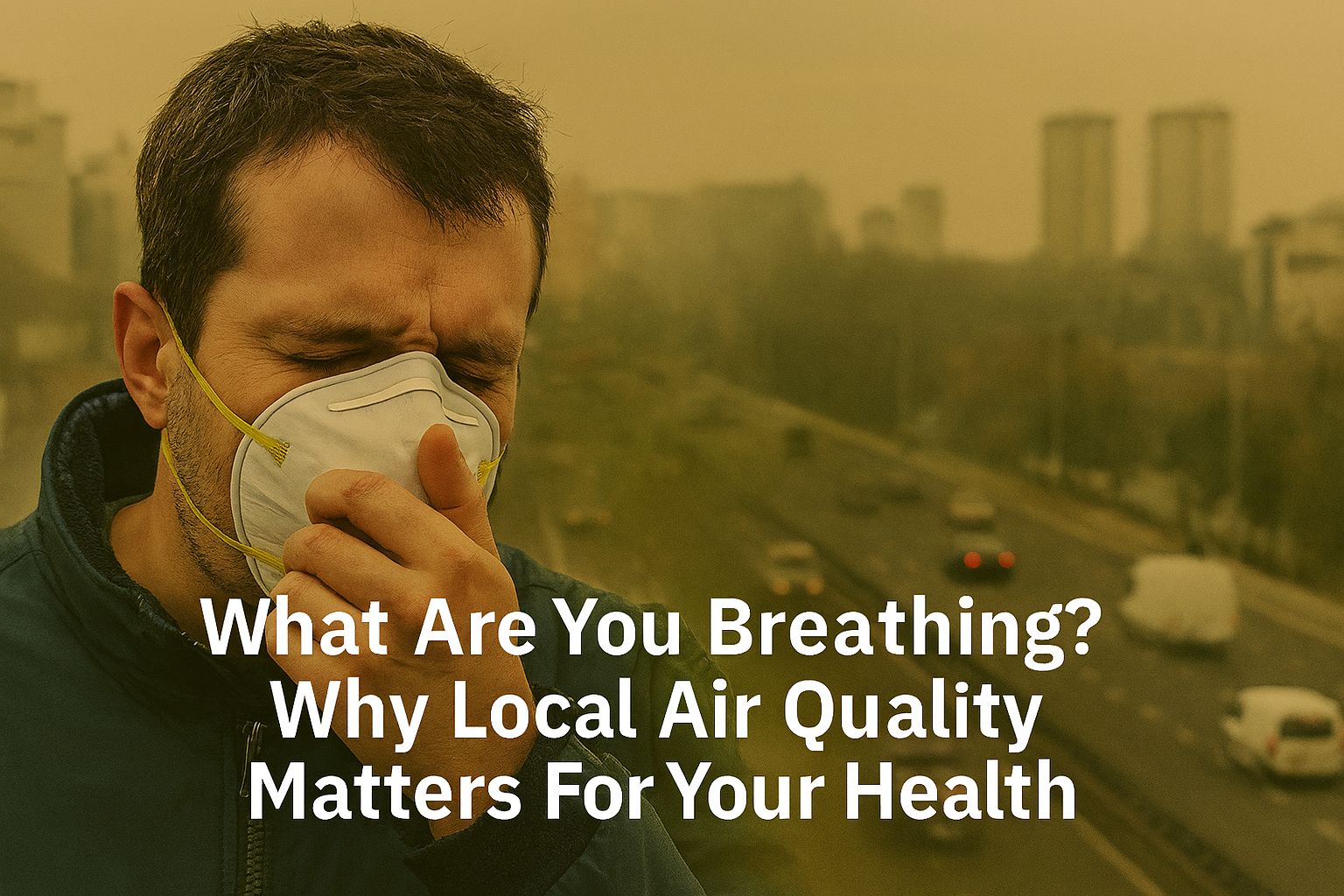Breathing Danger: Why Knowing Your Local Air Quality Matters

Every breath carries more than oxygen. Invisible particles and gases—from traffic, industry, and wildfires—can quietly damage our lungs, hearts, and brains. Most days, we don’t see them. That’s why knowing your local air quality isn’t trivia; it’s a daily safety check.
Common Pollutants and What They Do to Your Body
Particulate Matter (PM2.5 and PM10)
These tiny particles come from combustion, dust, and smoke. PM2.5 can pass deep into the lungs and enter the bloodstream, raising risks of asthma attacks, heart disease, stroke, and adverse pregnancy outcomes.
Ground-Level Ozone (O3)
Created when sunlight reacts with vehicle and industrial emissions. Ozone irritates airways, lowers lung function during exercise, and can trigger wheezing and asthma symptoms—especially on hot, sunny days.
Nitrogen Dioxide (NO2)
Primarily a traffic pollutant. It inflames the lining of the lungs, worsens respiratory conditions, and increases susceptibility to infections.
Sulfur Dioxide (SO2)
Released from burning coal and high-sulfur fuels. It causes throat and lung irritation and can provoke asthma episodes.
Carbon Monoxide (CO)
An odorless gas from incomplete combustion. CO reduces oxygen delivery to tissues and can be dangerous at elevated concentrations.
Air Toxics and VOCs
Compounds like benzene, formaldehyde, and PAHs are often present at low levels but are linked to cancer, neurological effects, and developmental harms.
Why Checking Air Quality Matters
- Immediate protection: Use AQI and forecasts to time outdoor activity, reduce exposure during spikes, and prevent acute symptoms.
- Long-term risk reduction: Consistent monitoring helps you minimize chronic exposure that contributes to heart and lung disease.
- Community action: Visibility of local sources and trends empowers advocacy for stricter controls and cleaner practices.
- Environmental impact: Pollutants damage ecosystems and can intensify climate feedbacks; tracking data informs smarter policy.
How PollutionNearMe.org Helps You Know What You’re Breathing
- Search your location: Enter your ZIP to see nearby facilities, violations, and enforcement actions.
- Map local exposure: Visualize industrial footprints alongside monitoring sites to connect sources with community risk.
- Stay accountable: Use transparent records to report concerns, support journalism, and drive remediation.
Tip: On high AQI days, limit strenuous outdoor activity, close windows, and use indoor air filtration if available.
Bottom Line
Clean air is not a luxury—it’s a necessity. By understanding common pollutants and using PollutionNearMe.org to visualize local risks, you can protect your health, your family, and your community.
